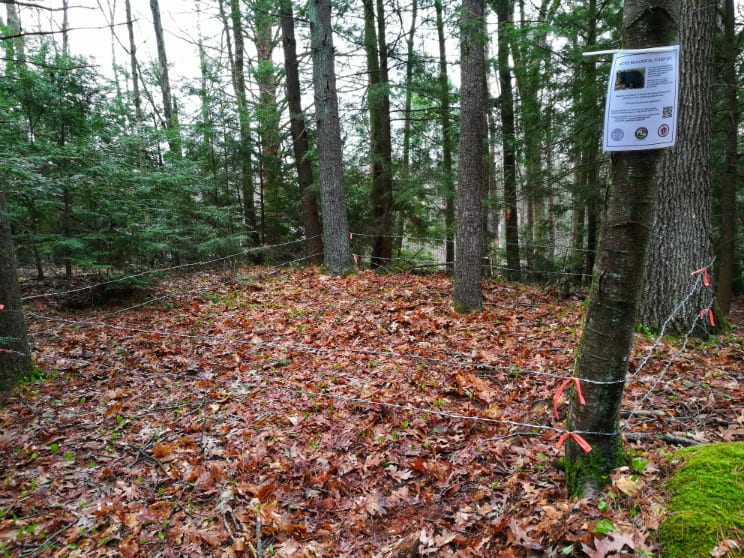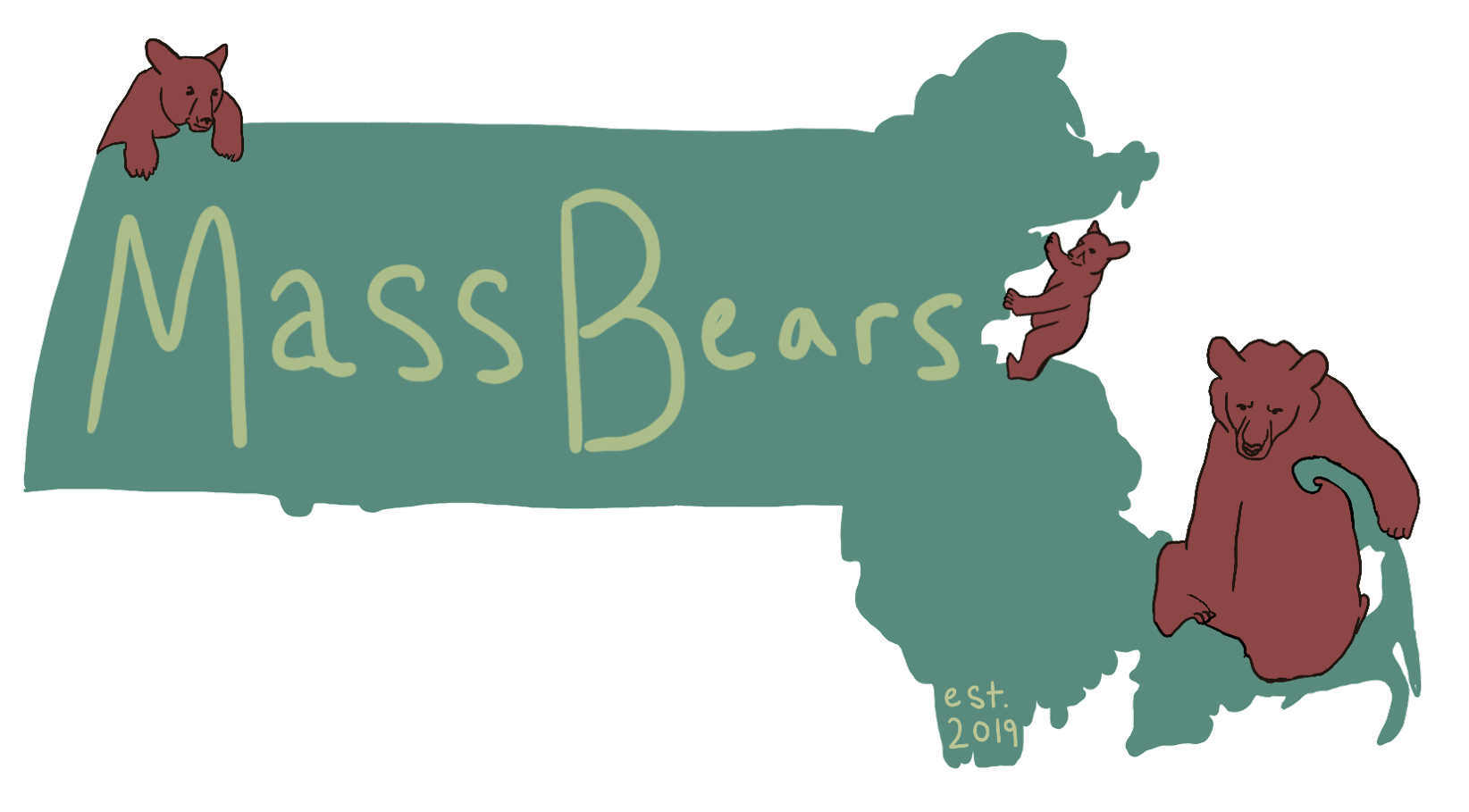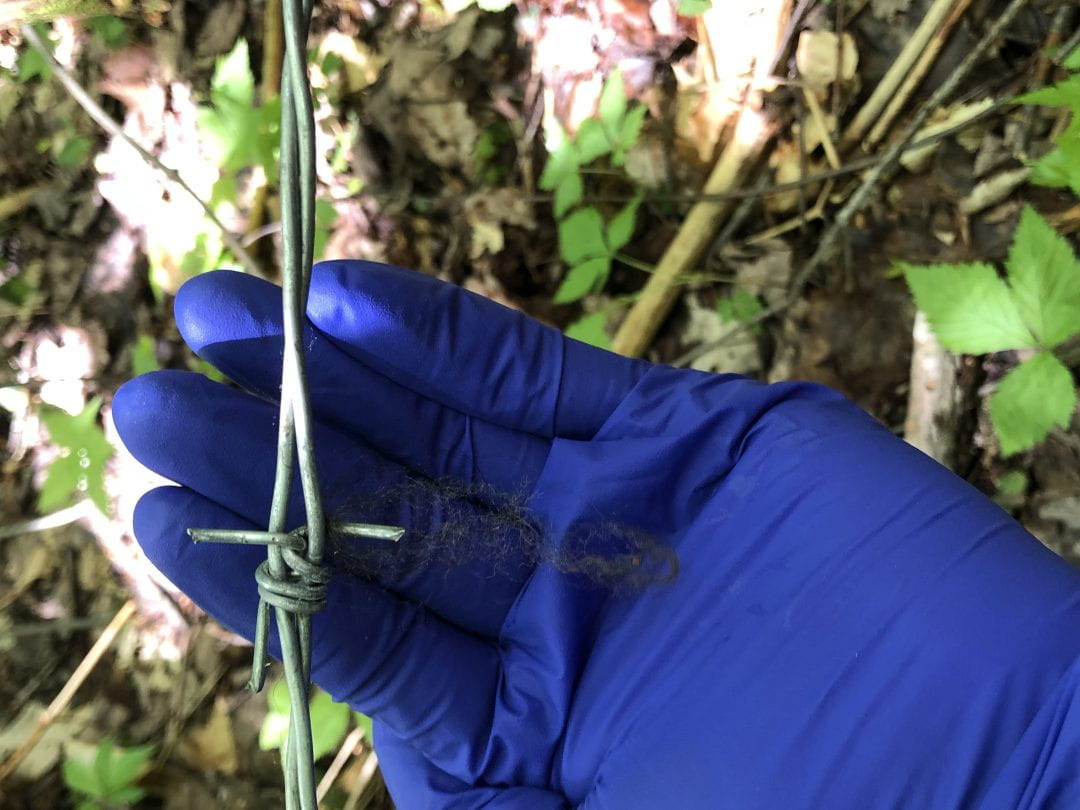To be able to estimate density and population sizes for wildlife, we often capture and mark individuals and then recapture them later. This allows compile a history of captures which in turn permits us to estimate the number of bears in an area. Due to advances in our ability to identify individuals from DNA extracted from hair, we do not need to physically capture bears for this study, we only need to capture their hair.

Photo credit: Kathy Zeller
To do this, we use non-invasive wildlife survey technique called hair corrals. Hair corrals consist of two strands of barbed-wire wrapped around a circle of 3-5 trees. The two strands of barbed-wire are roughly at calf and knee height. In the center of the corral, we make a brush pile and suspend a scent. The scent also drips onto the brush pile. When bears are passing through the area, they may detect the scent and cross over the wire to investigate where it is coming from, leaving hair behind on the barbs. This is an exciting way to be able to collect information about bears! It is used extensively throughout the range of black bears and does not harm bears, other animals, or people. The corrals only stay up during the field season and are taken down at the end of each summer.
Students working on the project check each site weekly and collect any bear hair. They record where the hair was found and what day they collected the sample.


You must be logged in to post a comment.